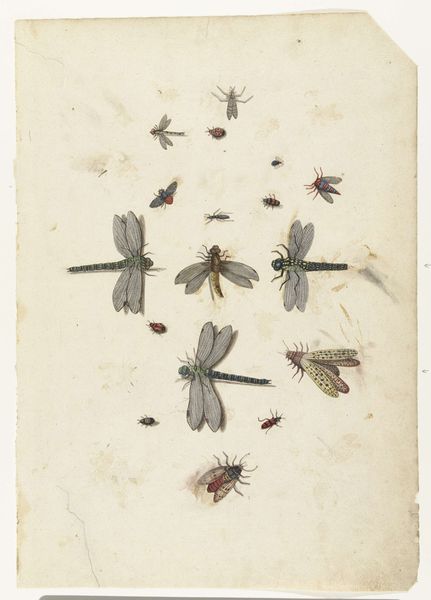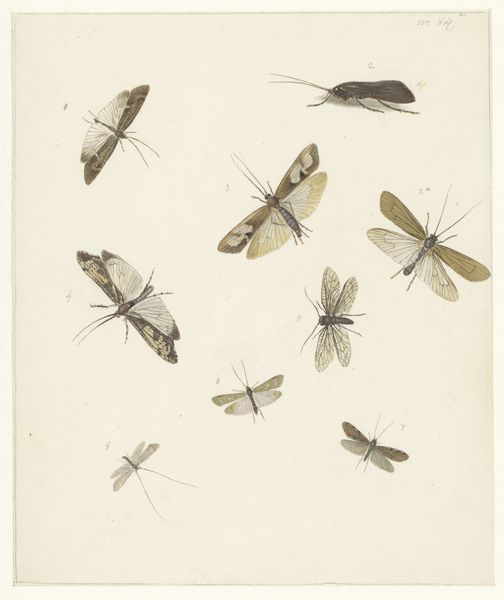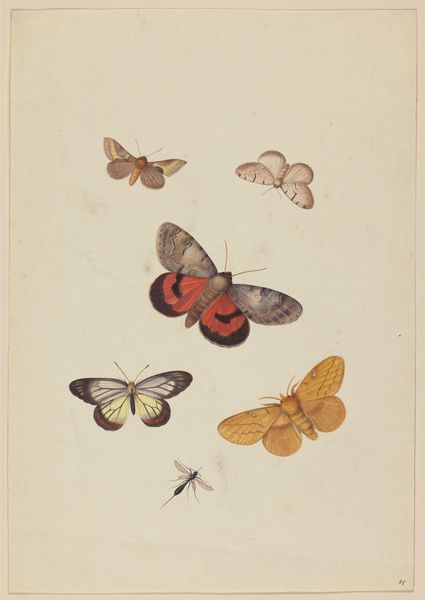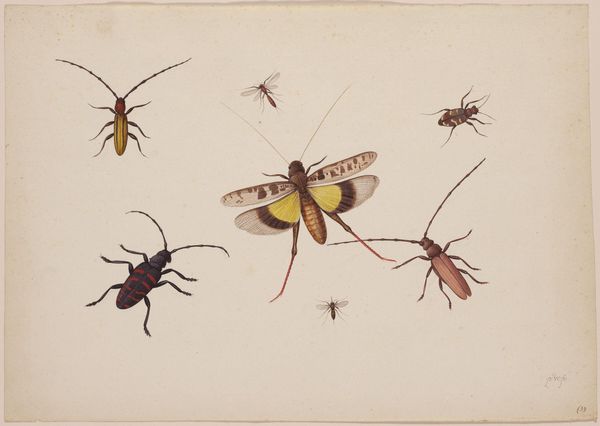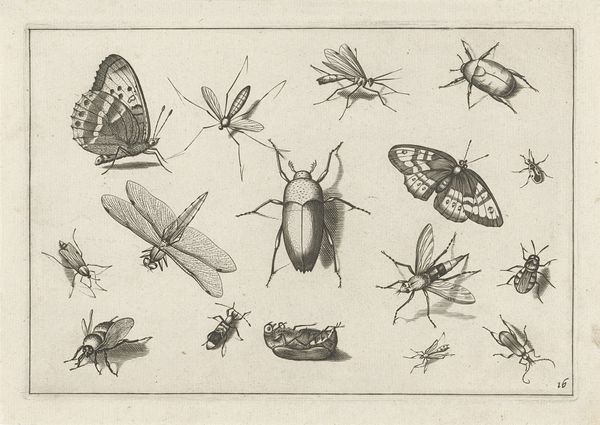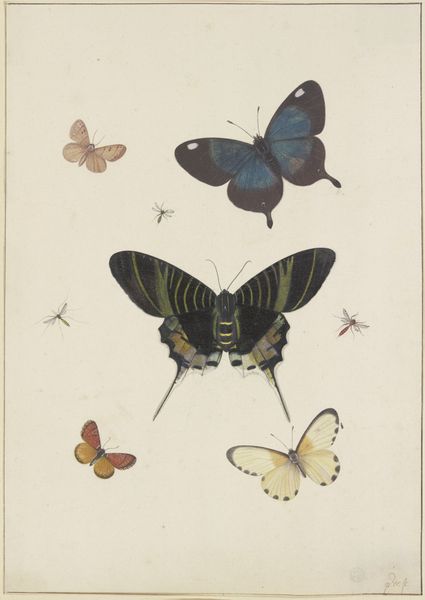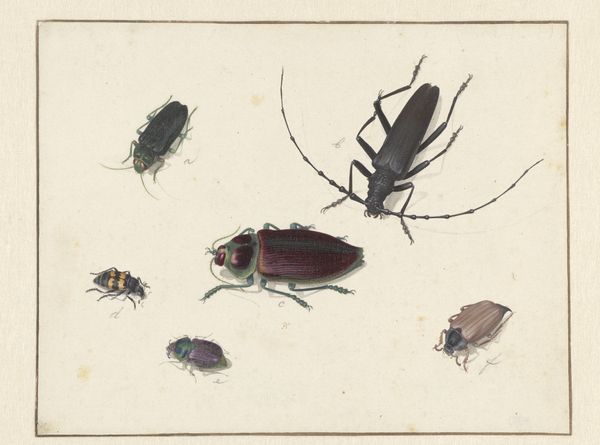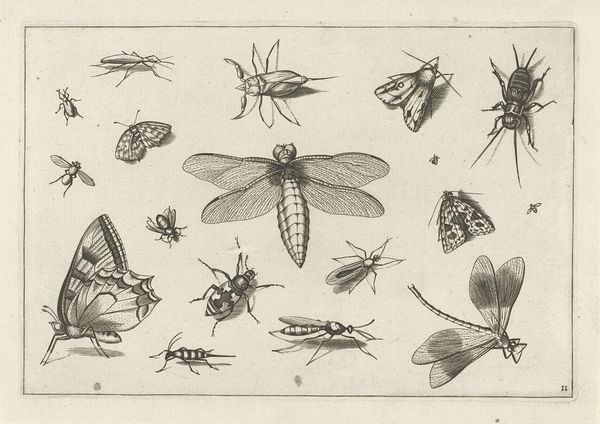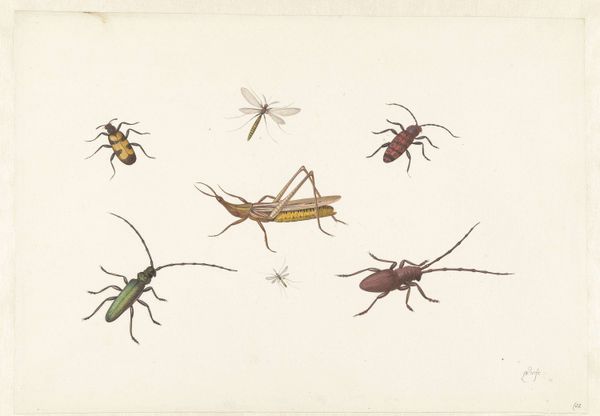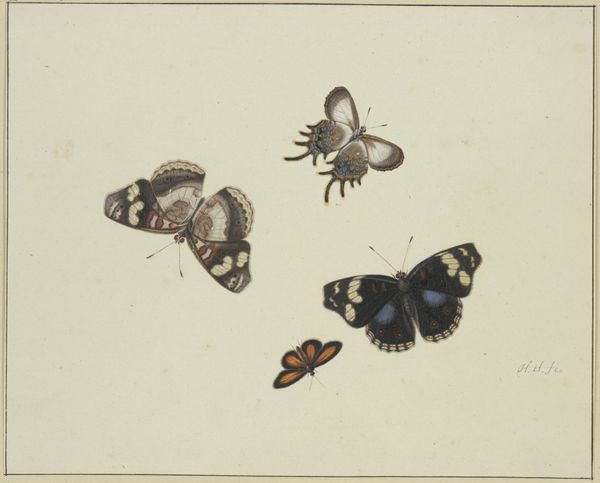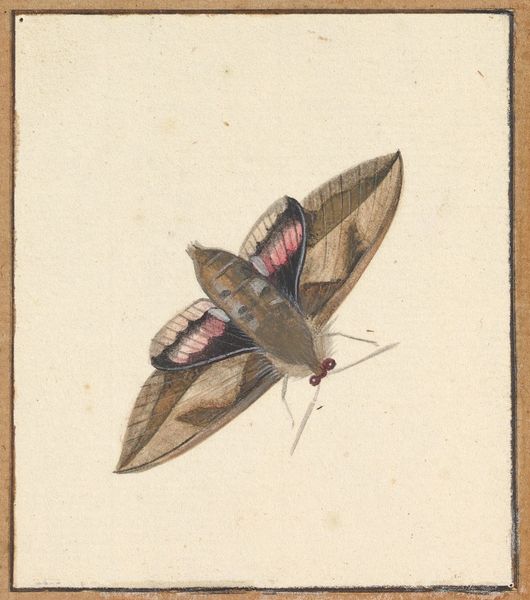
drawing, watercolor
#
drawing
#
watercolor
#
botanical drawing
#
naturalism
#
botanical art
Dimensions: height 201 mm, width 159 mm
Copyright: Rijks Museum: Open Domain
Editor: Here we have Albertus Steenbergen's "Studieblad met elf verschillende kevers," created sometime between 1824 and 1900. It's a study done in drawing and watercolor, presenting eleven different beetles. What strikes me is how each beetle, though small, seems so carefully rendered with delicate variations in color and form. How would you interpret this work? Curator: Focusing on the inherent formal properties, we observe a deliberate arrangement, do we not? Eleven subjects presented against an expansive ground. The subtle variations in watercolor wash construct volume and delineate texture with economy. Note, for example, the tonal modulations suggesting the carapace's polished surface, versus the matte texture implied on the wings. Editor: I see what you mean. The placement on the page does feel quite intentional. Why not cluster them, or spread them out more evenly? The beetles are all grouped at the top. Curator: Indeed. The large empty space could perhaps serve as a contrasting element. Its flatness accentuates the illusionistic depth achieved in the beetles. One could almost extrapolate a compositional strategy – form versus ground – to comprehend the drawing. What purpose do you think that void is serving? Editor: Perhaps it keeps us focused on the insects themselves. So much empty space emphasizes their individuality, each one rendered as a distinct form. Curator: Precisely. Steenbergen invites us to consider each subject on its own terms, and in relationship to the group. Editor: This conversation has definitely made me appreciate the artist's sophisticated choices. I thought it was simply a nature study, but it's more than that! Curator: Analyzing form often illuminates previously unnoticed depths of visual meaning.
Comments
No comments
Be the first to comment and join the conversation on the ultimate creative platform.
